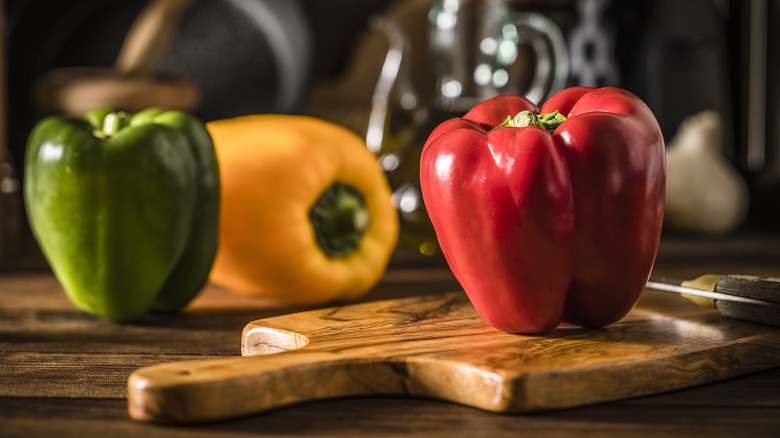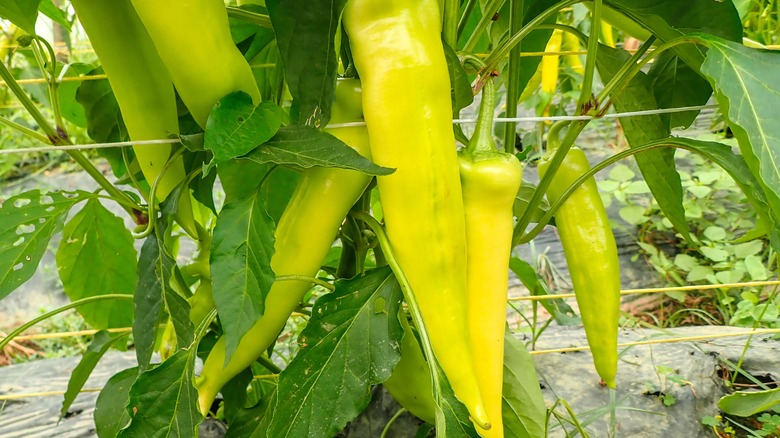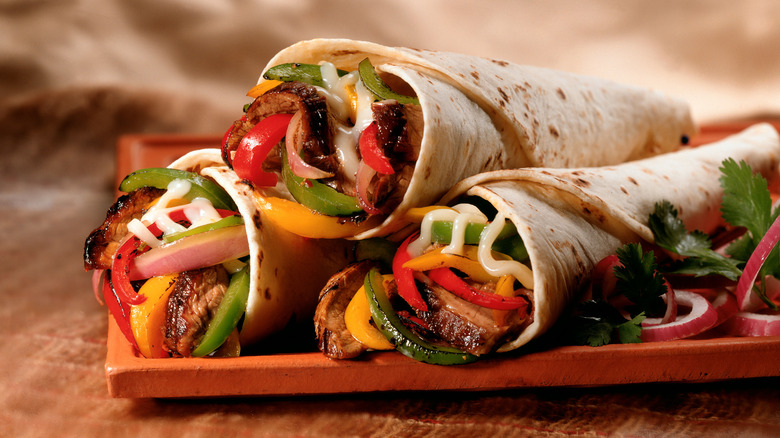Are Peppers Considered Fruits Or Veggies (And Does It Actually Matter)?
We all know apples, oranges, cherries, and bananas are fruits. Similarly, we know that carrots, celery, broccoli, and rutabaga are classified as vegetables. When someone asks why, we might base our answer on the generalized belief that fruits taste sweeter than vegetables. On the other hand, we might argue for a scientific definition that fruits contain seeds and vegetables don't. So what happens when you have a food that fits both definitions? You give up on the either/or idea and simply conform to the fact that it can be both.
Such is the case with peppers — all kinds of peppers are both fruits and vegetables, depending on who defines them. By the way, peppers aren't the only food with identity confusion. Other produce, such as pumpkins, tomatoes, eggplant, zucchini, and avocados, can claim residency as both a fruit and a vegetable. To understand this, you need to peek into the minds of botanists and chefs.
The botanist view
To scientists, the facts are cut and dry. Peppers are fruit. By Britannica's definition, fruit has at least one seed and grows from the flower of a plant. It's a reproductive mechanism that allows plants to spread their seeds and propagate. Therefore, fruits such as habanero, poblano, and bell peppers aren't actually a part of the plant (like lettuce) but a product produced by the plant. By definition, that fruit must always carry the seed or seeds of the parent plant. Insert images of avocado, lemon, apples, blackberries, kiwi, or grapefruit, and it's easy to see the shared possession of seeds.
We can also envision the seeds inside the many types of peppers, especially those that have made their mark burning our eyes. Perhaps a bit more challenging to imagine are foods we think of as vegetables, such as pea pods and green beans, both of which are scientifically classified as fruits.
As humans, though, we think about food differently than scientists think about plants. That's why we want to disregard the idea that peppers are a fruit. We're more focused on how they taste in hash browns O'Brien, roasted on pizza, or mixed into a stir fry. That's where we, and most cooks, classify them as vegetables.
The chef perspective
Scientists and chefs can loosely agree that where fruits result from a plant's reproduction, vegetables are part of the plants themselves. However, that's where the two groups part ways, for the simple reasons that, as humans, we think about food differently than scientists think about plants — and why we want to disregard the idea that peppers are fruit. We're more focused on how they taste in hash browns O'Brien or a stir fry. That's where we, and most cooks, classify them as vegetables. After all, they're not exactly the best choice for fruit-based dishes like classic apple pie, old-fashioned peach cobbler, or refreshing fruit smoothies.
From a chef's perspective, peppers are a gem in the kitchen but are revered for their flavor profile, texture, and other characteristics rather than their botanical classification. Peppers have a bit of spice, a touch of sweetness, a nice crunch, or a caramelization that can transform salsa, elevate soups, act as the perfect topping for pizza, or easily blend into a casserole. Sweet peppers marry seamlessly into fajitas and are a welcome addition to a green salad. In the end, peppers are indeed both a fruit and a vegetable, depending on who you ask. But when you're faced with stuffed peppers or jalapeño poppers, does it really matter how they're classified?


